Features
First Ceylonese pilgrimage to Mecca by air
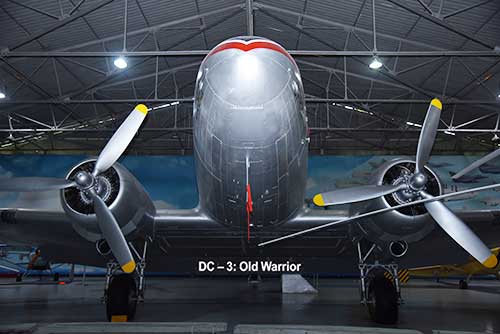
by Capt Elmo Jayawardena
Elmojay1@gmail.com
This is an ancient story; most records are lost, buried or moth-eaten. Still, there is a lot remaining in the minds of men who heard how things happened and what was commercial flying like in its infant days in Ceylon.
The aeroplane popularly known as ‘Dakota’ had been the workhorse of most allied forces during the Second World War. I do not know how many DC-3s were produced during the war years but they sure were somewhere around 16,000, or possibly even more. The aircraft came in various models whilst the prototype remained the fundamental ‘Dakota’ flying machine. After the war ended, most of the surplus DC-3s were converted into passenger-carrying aircraft. The new-born airlines popping up all over the world in ‘born again’ independent countries started their airline operations with secondhand military-used ‘Dakotas’.
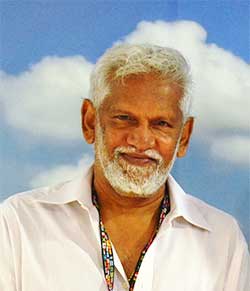 On the 10th of December 1947, Air Ceylon took off from the Ratmalana Airport on its maiden international commercial flight to Madras via Jaffna, operated with a DC-3, placing our little island on the world map of aviation.
On the 10th of December 1947, Air Ceylon took off from the Ratmalana Airport on its maiden international commercial flight to Madras via Jaffna, operated with a DC-3, placing our little island on the world map of aviation.
That was the beginning and then came the cautious expansion.
Those were the times, when the Haj and Umra pilgrims from Sri Lanka went to Mecca by travelling to Bombay and taking a flight from there. Some preferred the sea route from Colombo to Jeddah and then to Mecca by air or overland. As Air Ceylon tested its wings flying from Ratmalana to Jaffna and a few Indian airports, they began looking for new destinations. It was then that the Haj pilgrims negotiated with the National Carrier to charter a ‘Dakota’ to fly Muslim devotees from Ratmalana to Jeddah and back.
The commercial part of the matter was all-settled at the Airline head office and the task fell on the fledgling flight operations section to find a way to fly to Jeddah. The DC-3 was more than capable of the journey, of course, with multiple pit-stops for re-fueling and overnight stays. A fully loaded ‘Dakota’ weighing 26,200 Ib could carry 21 passengers. Its fuel capacity was 822 gallons and its two Pratt & Whitney Twin Wasp Radial engines drank 73 gallons per hour. The aeroplane had a ‘nil-wind’ range of approx. 1,500 nautical miles (nm) cruising at 6,000 ft. These were the performance data the flight crew had to work with, but there was a problem, a huge one at that. None of the Air Ceylon crew had flown those desert routes. Their exposure was limited to India, and to make it worse the Flight Operations office had no charts of the air-routes that could take them from Ratmalana to Jeddah! They were OK up to Bombay, but what lay beyond that was unknown or even a possible damnation.
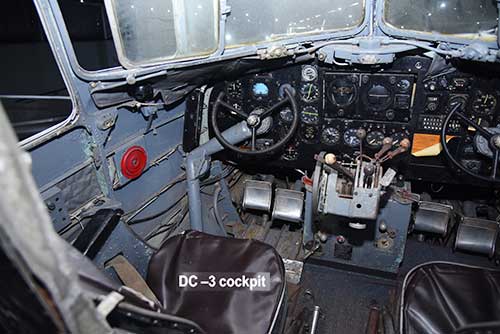
There was no way to go from Ratmalana to Jeddah as the crow flies. The crew had to consider the range capacity of their ‘Dakota’ and make their flight plan. The answer was at the Katunayaka RAF base. where they had all the necessary charts that covered the entire Middle Eastern sky. Post-war long-range operations were well-organised by the RAF, and they very generously shared all the information for route planning with details of radio beacons for navigation and radio frequencies for en-route communication.
Air Ceylon was now equipped to make their flight plan. They worked out the route from Ratmalana to Bombay (840 nm) and then to Karachi (471 nm), to Salalah (RAF base in Oman by the Arabian Sea – distance 871 nm), then to Aden (583 nm) and finally to Jeddah (627 nm).
Night stops were planned in Karachi and Aden with accommodation for crew and passengers. Everything was ready to fly to the unknown destinations through unknown territory and an unknown sky.
When I flew to Jeddah from BIA in the 80s it was on state-of-the-art Tri- Stars. We sat in the cockpit and punched into computers our route and destination Jeddah. We took off and engaged the autopilot and the automation did the rest and took us on the planned route to King Abdulaziz Airport in Jeddah. Even with all the sophisticated equipment we carried it was difficult to spot the runway when approaching the airfield. Everything was dusty, brown and hazy; it was either radar vectors or the instrument landing system that brought us to touch down. I often wonder what it would have been to fly a DC-3 to that same airport in 1950. The route they flew and how they found the airfields and countered the 40-degree heat in un-airconditioned cockpits would have been nothing less than the zenith of professional ‘seat of the pants’ flying. Perhaps it may have been the romance of it too, the true essence of flying which modern day pilots like me would hardly know.
They took off from Ratmalana with 21 Haj pilgrims bound for Jeddah. The flight crew comprised Capt Peter Fernando the Commander, Capt Emil Jayawardena the Co-Captain, Lionel Sirimanne the Radio Officer and G. V. Perera the Engineering Officer. Capt Peter was a veteran and the Flight Operations Manager of Air Ceylon. Capt Emil was an ex-RAF ‘Spitfire’ fighter pilot, who flew in the war; Mr Sirimanne and Mr Perera were experts in their allocated roles of communications and engineering. Off they flew, from Ratmalana, tracking to Bombay, where they stopped to refuel; everyone had lunch there. The next sector was to Karachi and as the sun went down in the Western sky, the ‘Dakota’ made its approach to land in Karachi’s Drigh Road Airport (currently known as Jinnah International). Now, it was night-stop time and the entourage moved to the BOAC crew hotel called ‘Speedbird’ located right next to the airport.
End of day one.
So far so good, they had flown 1,311 nm staying in the sky the whole day. Even though the first day’s route was quite familiar the navigation would have been very demanding as there were only a handful of non-directional beacons (NDBs) to tune to and use as nav-aids to make course corrections. The crew depended a lot on topographical maps and cautiously calculated aircraft positions by dead reckoning. This was real hard work by any standard.
The following morning, they departed Karachi and headed to Salalah Airport in Oman located by the Arabian Sea. This was an RAF base and the ‘Dakota’ was stopping there to refuel before flying on to Aden. Nearing Salalah they noticed the ground below completely covered with a thick stratiform-type cloud that stretched like a sheet as far as the eye could see. To make the situation worse, the Salalah Airport NDB was not working and the control tower too was silent. Radio Officer Sirimanne kept trying to raise Salalah and repeatedly failed. By dead reckoning the crew knew they were somewhere near Salalah Airport but with the beacon not working and without a visual sighting they simply could not descend through the cloud cover. Salalah aerodrome had considerable amount of high ground in the vicinity and the ‘Dakota’ descending through the cloud layer without a visual sighting could possibly plough into a hill killing everyone.
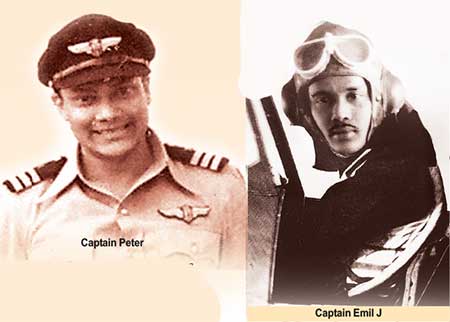
The crew had no fuel to go anywhere other than Salalah and they circled above the cloud layer for a while hoping to see a break in the clouds. They kept calling Salalah and re-tuning the beacon without any success. That, no doubt, was a tight situation. Truth be told, it was a very tight situation. The pilots played their last possible trump. Their plan was totally out of the box, yet sound and safe. They flew south/east from the place they were hovering, knowing they would now certainly be over the Arabian Sea. Then they slowly descended in cloud looking for the blue waters below. The plan was to get under the cloud base and fly above the water and make a 180 degree turn and fly towards land. They were experienced pilots who flew more with common sense and airmanship than fancy flight instruments. They were right. They broke cloud and saw the water and some boats, too. Now they were safe from the rugged terrain. Then they turned back, saw land below the cloud and headed to Salalah approaching from the seaside.
The radio crackled and the beacon came alive and Salalah tower was calling them. The ‘Dakota’ was safe and they flew towards the NDB at the airport and made a safe landing in Salalah. Many a pilot could have panicked in a situation like this. What the ‘Dakota’ crew did by flying out to sea to find a safe way to descend was a class act, and in my humble opinion deserves to be remembered and reminded to others as a hallmark of the type of gutsy people who flew aeroplanes in the bygone days.
The RAF base had not received the departure signal from Karachi that a DC-3 was flying to Salalah. The skeleton staff at the airport had shut down the aerodrome and gone for a sea bath. While they were frolicking in the water they heard an aircraft circling above the cloud layer and knew some pilot was desperately trying to land in Salalah. The RAF staff ran ashore and got into their vehicles and raced to the airport. That is how the radio came alive and the beacon started working. This was 1950, and such incidents did happen in aviation. The crew received a case of beer as a gift from the RAF boys and they took off, again after refueling, to Aden.
High frequency (HF) weather broadcasts were forecasting thunderstorms over Aden. The ‘Dakota’ had no radar unlike modern aeroplanes with colour screens to detect storm cells. The DC-3 pilots depended solely on their sight to carve a safe path weaving in and out of clouds to avoid weather. At night they went by the lightning flashes to stay away from thunderstorms. An old trick in flying DC-3 was to lower the landing gear if flying in bad weather. (I really can’t remember why, but we did it when flying ‘Dakotas’). The two pilots who were flying the Haj pilgrims were well-seasoned veterans who were a rare breed of aviators; they were so different from the people like me who flew modern jets. We can only imagine their feats and marvel on how they survived in unfriendly skies in their unsophisticated flying machines which hardly had any automation.
The ‘Dakota’ arrived in Aden safely and the crew and passengers did their second night stop after a weary, event-filled day flying the unknown skies. The following morning, they flew the last leg from Aden to Jeddah, flying over the Red Sea. It sure must have been a pleasant trip of 627 nm. The ‘Dakota’ crew brought their 21 passengers safely from Ratmalana to Jeddah flying a total of 3,392 nm. The pilgrims said their good-byes and disembarked to travel to Mecca overland.
The ‘DC-3 turned back and flew to Aden for another night stop. The return journey was in an empty aeroplane. That made it possible for the crew to fly direct to Karachi from Aden. The final night-stop was again at the Speedbird Hotel. The following day they flew to Ratmalana via Bombay after a pit-stop in Santa Cruz airport to re-fuel. A little more than a week later another Air Ceylon DC-3 flew from Ratmalana to Jeddah following the first flight’s flight-plan to bring back the Haj pilgrims home.
Those who know aeroplanes and the sky would cheer such aviators who blazed their way to the unknown in the magnificent ‘Dakotas’. To the non-aviators, I can only say this was flying at its optimum best, flown by men who knew what the flying game was all about.
I knew the entire crew that flew the ‘Dakota’ very well. Capt. Peter drove a yellow and black Riley and lived in Uyana, Moratuwa, next to St Joseph’s Church. Capt. Emil, the ex-RAF fighter pilot I knew from the day I was born to the day he said his final good-bye to this world. He was my father. Mr. G.V. Perera was a very senior aeronautical engineer, a wonderful man who even had a flying license. And the Radio Officer, Uncle Siri, he is only 101 years old and is active on ‘Facebook’. Lionel Sirimanne still mows his lawn in Kohuwela and drives his car to Keell’s supermarket. I am deeply grateful to him for some of the details he gave me about this flight to Jeddah. As for the old warrior, the ‘Dakota’, one of them is spruced up and kept in the Air Force Museum in Ratmalana. It is a worthy sight to see as it majestically rests its soul among airmen and aeroplanes and aviation lovers who come to see this historical aeroplane.
Features
Emotions, learning, and democracy: Reviving the spirit of education
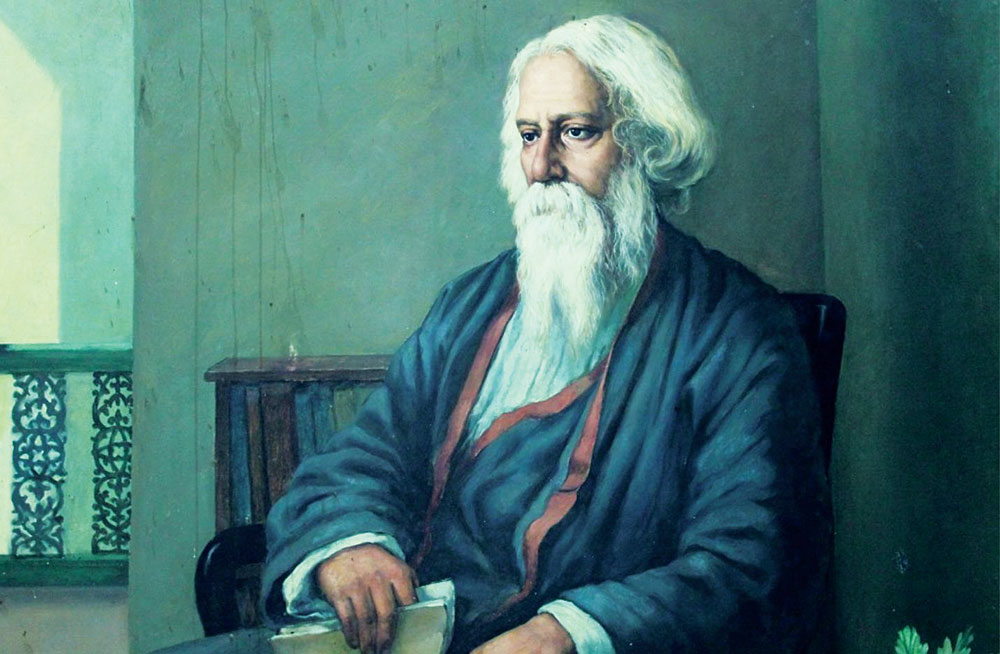
When a father becomes a gambler and his obligation to his family takes the secondary place in his mind, he is no longer a man, but an automaton led by the power of greed.
(Tagore, Nationalism, 2018)
(Excerpts of the keynote address at Annual Sessions at the Faculty of Education, The Open University of Sri Lanka––Empowering Minds: Education for New Era.)
As I am coming from the Humanities and Social Sciences and Performance Studies disciplines, I have a close affinity with education and education philosophy. I have also been engaged in the current debate on higher education, writing and presenting my ideas with the academia and the public domains. I have been motivated by the like-minded scholars (Senanayake, 2021; Amarakeerthi, 2013; Uyangoda, 2017 & 2023; Rambukwella, 2024; Jayasinghe & Fernando 2023; & Jayasinghe 2024) who have been continually discussing problems related to our education and the role of humanities and aesthetics within this sphere. Some of the recurrent themes I have raised in these writings are burning issues in our current education scenario.
Among them, the indoctrination, decline of the arts and aesthetic education in our education sector, and the importance of creative arts in human development were prominent. Hence, in today’s speech, I will continue this discussion and try to broaden the scope of it. The theme of today’s speech can be categorized in three areas of studies: emotions, education, and democracy. What I am going to present today is the role of emotion in education and how this new paradigm of education could lead to the democratic establishments in society. In this speech, I try to build a connection between these key areas of arts and aesthetic education, its vital ingredient of empathy, and how this empathic education supports democracy in the society. This argument will be further elaborated in the course of my talk.
We, as a nation, are on the verge of a transition. This transition has been gradually taking place in our society through the influences of neo liberal economic and political changes happening throughout the region. The glory of our free education system and the heritage we envisioned have also been challenged by the new developments of private educational institutions. These new trends have distorted the true meanings while diminishing the philosophical and moral values of education.
It is the skill acquisition that has come to the fore of the educational discourse. Skills that can be used in the social milieu, and can support the economic growth of the country have been commissioned for our curricula. This mantra has been circulated and supported by the governments which ruled this country for decades. We, as academics, have also adopted strategies to cater these policies to indoctrinate our children to become future entrepreneurs. All the philosophical and moral values of education have been reduced to produce mere labourers. Education is interpreted as a commodity, which is being sold in the market based on supply and demand. We are advised that if we cannot compete in the market, our survival is at stake.
Now, who are we? And, where are we? Where is our society heading? These simple but vital questions are important for us to rethink how we educate our children and what we gain out of it. What kind of society we have created today, as a whole after implementing those educational policies imposed by the authorities? Over the past few years, the world has gone through a myriad obstacles and difficulties facing a worldwide pandemic and devastating wars. After many centuries, we faced the Covid-19 pandemic which challenged us on how we live as a community. Over two years, we were locked down and were isolated from the world. We were locked down in our own houses and the social distancing was imposed reframing ourselves to be connected with each other.
Pandemic, Aragalaya and emotions
Pandemic introduced different ways of learning and teaching in our education sector. The traditional ways of teaching and learning were replaced by the online modes of learning. We started conducting seminars and lectures through online zoom technology and other modes to connect with our students. Students, somehow or other, connected with us through their mobile phones and other devices. The conception behind all these technological advancements implied that the education can be successfully delivered via online mode, and the cost can also be reduced drastically allowing the government to reduce the cost of education and infrastructure.
However, the vital concepts in the educational business, such as corporeality, subjectivity, intersubjectivity, temporality, and spatiality have been redefined and challenged. The learning and teaching were redefined in the virtual reality, reducing the values of interpersonal and corporeal connections between learners. We tend to believe that it is not important for the learner to be present in front of other learners but is enough for her or his virtual avatar to be present.
Soon after the taming of the pandemic situation, our society was shattered with the economic bankruptcy and social upheavals. The financial hardship experienced by the people of the country, resulted in demand for basic needs, cooking gas, petrol, and other important rations. Vigil and silent protests, followed by the mass movements and occupation, ignited the country’s largest non-party people’s struggle, Aragalaya.
Youth of the country encamped the Galle Face Green, and established alternative communal spaces. Cinema, school, community kitchen and even an alternative people’s university were established. Within a few days, many GotaGoGama encampments were established in major cities of the country demanding the President and the Parliament to resign. The new people’s democracy was established by people, for people. This mass movement not only showed us new ways of governing the country but also new ways of living as a community. Human connection and communal living were established until the military actions uprooted the GotaGoGama encampment.
You must be wondering why I am trying to recall this unpleasant past of our social memory. Why is it important for us to go back and see how we passed this phase of time and have come to this point today? As my key ideas are related to emotional education, empathy, arts, and democracy, it is important for us to revisit such a brutal past and learn lessons from it. The pandemic situation taught us how it is important for us, as human beings, to be connected and live with each other as a society.
The pandemic taught us the importance of revisiting communal life, which has sustained and enriched our lives for centuries. Aragalaya further emphasised the importance of communal struggle and co-living in order for us to establish a democratic society. Democracy cannot be sustained without human engagement. It is not something that the ruling government or an alien authority donates to us. It is something that is generated through human connections and collective will. If we clearly scrutinise those two phenomena we experienced in the recent past, it is evident that in the first phenomenon, the pandemic challenged our emotional engagement with others. In the second phenomenon, Aragalaya, we witnessed how important emotions are to reconnect with people and demand for democracy.
Anxiety of our time
Today, as educators, we are on the verge of resolving complex issues related to education. Information technology and AI have invaded the traditional teaching and leaning approaches. The role of the teacher is being challenged and also being shifted by artificial intelligence. The question arises, whether we have a key role to play in the lecture theatre or in the classroom when AI invades our positions. With technological advancement and artificial intelligence, our role as teachers and also what we teach are being challenged. Now, the question is what educational philosophy or theory is suitable for us to guide our next generation of learners’ what methods are appropriate for this new generation to learn and become valuable citizens for the country.
The argument that I want to bring forward is that in our education, we lost the key ingredient, which is the affective development in learning. In other words, we have not focused on how our learners should be equipped with emotional educational principles. Affective components of our education were marginalised or forgotten in favour of promoting skill development or manual learning. One of the reasons behind this lack is the way we conceptualised our educational policies, defining education in dichotomous ways.
For instance, as philosopher john Dewey says, ‘theory and practice, individual and group, public and private, method and subject matter, mind and behaviour, means and ends, and culture and vocation’ (Palmer et al., 2002, p. 197) are the ways that we defined our educational principles. Dewey’s educational philosophy is based on the key principle that the children should learn in the classroom where they learn the society through ‘miniature community and or embryonic society’ (Palmer et al., 2002, p. 196). It is vital for the students to learn this communal living, because in the larger canvas, they learn to live in the democratic society as elders. Communal empathy is thus a vital component in developing a healthy, democratic and caring society where each person has a place and respect.
Today, we focus on education, but the truth is we are living in a paradoxical era. Bruzzone (2024) argues that with this pandemic situation, the ongoing conflict between developed nations, and also the advancement of television and online technology, our young generation is in a conundrum. Living in these complex social terrains, our young generation is experiencing complex inner upheavals. He argues that,
The rhetoric of happiness and the entertainment industry keep children and adolescents in a state of intermittent distraction that prevents them from exploring their inner self, including its less appealing, grey areas. Cinema, TV, and video games elicit strong emotions, helping the young to evade the desert of boredom and apathy (Bruzzone, 2024, p.2).
Even though our young people are equipped with devices throughout their livelihood, more or less they are isolated. The media always exaggerates that with mobile technology and other online devices, we are connected to the world and are not isolated.
We also tend to think that we are a part of global citizenship. However, the truth is that most of us are becoming isolated though we are connected with others through technology. Hence, Bruzzone argues that in order to overcome such isolation, existential vacuum and indifference, people tend to experience adrenaline rushes through various risk behaviours, speeding, loud music, and psychotropic substances (Bruzzone, 2024).
Affective life
What I argue here is not to give up our engagements with the new technology or devices but to find ways of reawakening our emotional life within us. This affective life is still hidden in our life that our learners do not know how to find it; or rather, we have not taught them to unlock this emotional life within. Our education, as I argued earlier, does not have such intention or components where the learners can be equipped with emotional intelligence.
We have thrown away all the important aspects of such components in our educational system in favour of developing manual learners. These manual learners do not have such empathic life, affection, or emotional intelligence to deal with their own emotional lives, or they do not have knowledge to deal with others in the society. The result is what we have today: the merciless society where people are competing with each other to accumulate material wealth. Citing Galimberti (2007), Bruzzone further argues how this can create a societal issue when the individual cannot cope with his/her emotional life:
This inability to express and share emotions can sometimes explode, taking the form of uncontrolled aggression and impulsive and maladaptive ways of acting out: when this occurs, unacknowledged emotional experiences (of anger, frustration, a sense of inadequacy, fear, and so on) turn into words or acts of hatred and violence—usually towards vulnerable individuals–,flagging a growing dis-connect between acting, reasoning, and feeling: the heart is not in tune with thought nor thought with action (Bruzzone, 2024, p. 2).
Thus, our education has created this person who is struggling to connect with the heart; heart with the thought and thought with action. This dislocation of the heart with thought and action has resulted in developing antipathy towards the society. This antipathy also destabilizes the democratic social value systems. If we really need to re-establish a democratic society, we should first focus on our existing education system.
It is not all about how we integrate new technology and equipment to facilitate our learners but it is about how we allow our learners to first unlock their emotional life, and secondly think how they reconnect with the society. A new educational approach should be tailored to facilitate this vital objective. Hence, let me briefly discuss how creative arts and aesthetics can be useful for developing such individuals who will be empathic as well as critical towards the social changes taking place in this millennium.
At this juncture, it is important to revisit one of the key thinkers and an educational philosopher, Rabindranath Tagore. Tagore is one of the few philosophers who have been thinking and developing an alternative learning approach through his Vishva Bharathi concept. He established Shanti Niketan where this new approach was primarily being tested. Encapsulating his philosophy of learning, he argued,
For us, the highest purpose of this world is not merely living in it, knowing it and making use of it, but realizing ourselves through expansion of sympathy and not dominating it, but comprehending and uniting it with ourselves in perfect union (Bhattacharya, 2014, p. 60).
As this statement clearly indicates, Tagore’s vision of education is developed for cultivating sympathy towards other humans and the environment alike. This education does not persuade the learner to think about his/her environment as something that can be commodified and utilized as material. The environment where the individual is living is also a living entity that is intertwined with human beings. Therefore, the individual should think in a different way to converge with the environment and find a place for co-living. In order to establish such an empathic educational approach, we need a different mode of educating young people. This Tagorean approach to education clearly emphasizes the value of the affective nature of education. It is the emotional life of the individual which is focused and cultivated through various means of teaching and learning.
Emotion and democracy
As of today, we lack this vital emotional component in our education. One of the fallacies behind this situation is that we tend to believe that emotions reside within ourselves, and they are private and personal. This is a misconception that is being sustained through our existing systems of education. However, on the contrary, emotions do not only provide richness to our own personal lives but they are also the primal tool that connects us with the outer world. In other words, we connect with other human beings in the society through our emotional arc. If the individual disconnects the communal engagement, this can result in destructive mannerism.
‘This disintegration of reciprocity, which weakens the social fabric, effectively leaves the individual isolated in a state of loneliness and uncertainty’ (Bruzzone, 2024, p. 13). This isolation and uncertainties of individuals can also have a negative impact on the healthy relationship with communities and, largely, on the democratic institutions. As scholars argue, this can be resulted in sustaining endogamous, xenophobic and violent neo-tribal grouping that have mushroomed in our society. This is what we have seen in the form of various nationalist upheavals in our society for the last few decades.
This tendency, therefore, leads us to further think about the value of emotional education and also its role in communal living. Further, emotions and emotional competency lead us to engage with other subjects, and also emphasizes that it is a bridge that is built between you and me and the world. When this bridge is broken, our connections between myself, you, and the world could be destabilized and shattered.
That is why scholars such as Bruzzone argue that ‘affectivity is also an ethical and political issue’ (Bruzzone, 2024, p. 12). It is ethical in the sense that my engagement or disengagement with the social beings are formed and developed through the emotional desires that I have inherited. Further, it is political, because, when the individual assumes that his/her existence relies on the communal existence, this assumption leads to political action of individuals. Hence, emotional education is vital for the healthy existence of a society. Cusinato, therefore, states that ‘emotional education is at the core of democracy’ (Cusinato Cited by Bruzzone, 2024, p, 13).
Finally, I would like to highlight one of the brilliant minds of our time, Prof Martha C. Nussbaum and her ideas on why arts education is vital for a continuation of democracy, and also how emotional education is important to achieve this (Helsinki Collegium, 2024). Today, as a civilization, we are confronting various and complex issues threatening the continuation of the human race. These key issues are not limited to countries or nations. They are applicable to all human beings currently living in the world.
Environmental crisis, global warming, food security, poverty, and war are some of the recurrent issues we face today. In order to focus on these larger humanitarian crises, how could we equip our students to think in broader ways to tackle these complex issues? Nussbaum provides us some important points to think on how we could design our education system where the individual can be more empathetic and passionately engage with worldly phenomena. According to her, we need citizens who have the capacity to think and see the world as other people see the world; need to develop the capacity for genuine concern of others, near and distant; teach real things about other groups in the society and learn to reject stereotypes; and promote accountability and critical thinking, ‘the skill and courage it requires to raise a dissenting voice’ (Nussbaum, 2016, p. 45-46).
Conclusion
Nussbaum’s recent works largely focus on how human emotions are connected to the establishment of democratic societies in the world. Arts, culture, and humanities play significant role in promoting positive emotions amongst participants. It also promotes wellbeing and happiness which are vital for a healthy society. Today, we have a new government. This government often emphasizes the importance of investing in education, from primary levels to higher education. They have shown the commitment to change the existing stale education systems which need drastic and constructive criticisms to change for a better system. Thus, we, as educators, thoroughly believe that it is time for us to revisit what we have taught and how we have taught our younger generation for decades. It is time for us to rethink new ways of tailoring our education system where we could promote empathy and develop empathetic citizens who care about others and the environment we live in.
Thank you.
References
Bhattacharya, Kumkum. 2014. Rabindranath Tagore: Adventure of Ideas and Innovative Practices in Education. Cham: Springer International Publishing.
Bruzzone, Daniele. 2024. Emotional Life: Phenomenology, Education and Care. Springer Nature.
Harshana Rambukwella. 2024. “The Cultural Life of Democracy: Notes on Popular Sovereignty, Culture and Arts in Sri Lanka’s Aragalaya.” South Asian Review, July, 1–16.https://doi.org/10.1080/02759527.2024.2380179 .
Helsinki Collegium. 2024. “Democracy and Emotions– a Dialogue with Philosopher Martha C. Nussbaum.” YouTube. June 6, 2024. https://www.youtube.com/watch?v=p3xdcfbE3KA.
Jayasinghe, Saroj. 2024. “Arts and Humanities in Medical Education: Current and Future.” Jaffna Medical Journal 36 (1): 3–6. https://doi.org/10.4038/jmj.v36i1.202.
Jayasinghe, Saroj, and Santhushya Fernando. 2023. “Developments in Medical Humanities in Sri Lanka: A Call for Regional and Global Action.” The Asia Pacific Scholar 8 (4): 1–4.https://doi.org/10.29060/taps.2023-8-4/gp2878.
Karunanayake, Panduka. 2021. Ruptures in Sri Lanka’s Education: Genesis, Present Status and Reflections. Nugegoda: Sarasavi Publishers.
Nussbaum, Martha C. 2016. Not for Profit Why Democracy Needs the Humanities. Princeton University Press.
Palmer, Joy, David Cooper, and Liora Bresler, eds. 2002. Fifty Major Thinkers on Education. Routledge.
Uyangoda, Jayadeva, ed. 2023. Democracy and Democratisation in Sri Lanka: Paths, Trends and Imaginations. 1st ed. Vol. 1 and 2. Colombo: Bandaranaike Centre for International Studies.
Short bio of the speaker
Saumya Liyanage (PhD) is an actor both in theatre and film and also working as a professor in Drama and Theatre at the Department of Theatre Ballet and Modern Dance, Faculty of Dance and Drama, University of the Visual and Performing Arts (UVPA), Colombo, Sri Lanka. Professor Liyanage was the former Dean of the Faculty of Graduate Studies, UVPA Colombo and currently holds the position of the Director of the Social Reconciliation Centre, UVPA Colombo.
Acknowledgements
The author wishes to thank Himansi Dehigama for proofreading the final manuscript of this keynote speech.
This keynote is delivered at the annual sessions of the Faculty of Education, Open University of Sri Lanka on the 6th of February 2025.
by Professor Saumya Liyanage
(BA Kelaniya, MCA Flinders, Australia, PhD La Trobe, Australia)
Department of Theatre Ballet and Modern Dance
Faculty of Dance and Drama
University of Visual and Performing Arts, Colombo, Sri Lanka
Features
Achieving an arduous task: Comparing philosophies
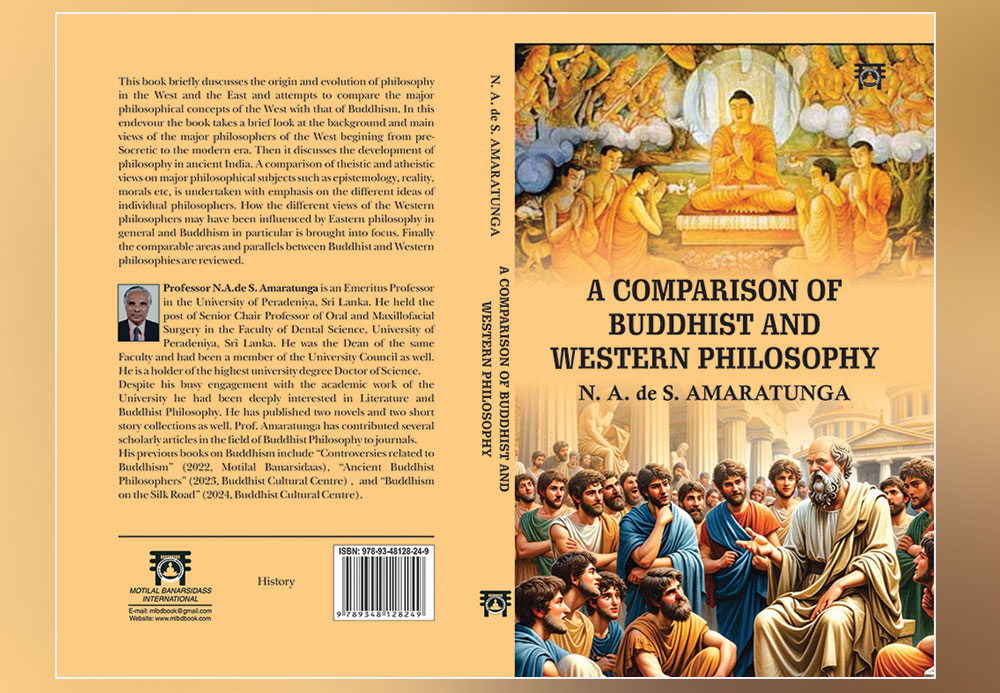
Review of Prof. N.A. de S. Amaratunga’s book:
‘A COMPARISON OF BUDDHIST AND WESTERN PHILOSOPHY’
Prof. Asoka Amaratunga is well known to the readers of The Island by his regular contributions on many topics, including Buddhism, but what is less well known is that he has authored several books on Buddhism. He seems to have well used his retirement from the Faculty of Dental Science, University of Peradeniya in 2006, as he has published four books titled; “Controversies related to Buddhism”, “Ancient Buddhist Philosophers”, “Buddhism on the Silk Road” and the latest “A Comparison of Buddhist and Western Philosophy” which is the subject of this review. A fifth titled “Maithreyanatha, Asanga, and Vasubandu – Their Life and Philosophy” is already in print.
No sooner had I started reading this valuable work than I realised what an arduous task it would have been to write, as I found great difficulty in grasping the meaning of the multitude of terms used in philosophy! Fortunately, he has taken the time and the effort to explain these terms making this book an excellent introduction to philosophy for novices, myself included. However, the scope of the work is much more significant in that it illustrates how Buddhist philosophy has heavily influenced late Western philosophy; an inference I have drawn by reading the book, though the author is less emphatic, perhaps leaving the reader to come to own conclusions based on the facts presented, which I consider a great strength of this book. It is a painstakingly crafted book which goes in to detail and, by the very nature of the subject, a difficult read but appropriate repetitions make the job of the reader easier.
Though there are similarities in the thinking of early Greek philosophers like Socrates, Plato, and Aristotle with the teachings of the Buddha, Prof Amaratunga argues against any influence and states:
“If we consider the comparable periods of the life span of these philosophers it is seen that Buddha lived from 624 – 544 BCE which is the accepted dating in Sri Lankan and South Asian tradition. On the other hand, Greek philosopher Socrates’ life span was from 470 – 399 BCE. Socrates was born more than hundred years after the death of Buddha. On the other hand, Thales of Miletus who is considered the father of philosophy lived during 624 – 546 BCE which closely match the Buddha’s life period. However, there would not have been well developed means of communication between East and West in those early times. Greece was positioned between the west and the east as it were and may have acted as a conduit for transmission of culture and knowledge in either direction but for this to happen roadways had to be built connecting these regions which may not have happened during Buddha’s and Socrates’ time. The oldest global trade route is believed to be the Silk Road which came into partial existence in the 300 BCE and was connected to the West in the 200 BCE. Active trade between the two civilisations began in 100 BCE. Cultural exchanges between the West and the East would have happened since 100 BCE”.
Though in this paragraph, commencing the final chapter of the book, Asoka mentions that the Buddha lived from 624 to 544 BCE and that Socrates was born more than hundred years after the death of the Buddha, in the preceding pages he refers to Socrates as a contemporary of the Buddha and that Buddhism started in the 5th century BCE. Perhaps, this happened because the date of birth of the Buddha is a continuing argument, some authorities opining that it is hundred years after the date accepted in our tradition. Though some speculate whether some of the ideas of Socrates were influenced by the teachings of Buddha, as there are similarities, lack of means of communication makes it unlikely. Interestingly, some experts have opined in the past that the Buddha was influenced by Socrates!
I must point out another error; in reference to Christianity he states: “Christianity began as a sect of Judaism and remained so for centuries until it perceived itself as a separate religion in the 4th Century AD. It spread widely and grew to be a world religion in the 21st Century.”
Perhaps, he meant that Christianity spread widely to be the most embraced religion and continues to do so even in the 21st century, despite dwindling numbers.
The book starts with a chapter on the influence of ancient migration on the development of philosophy, followed by several chapters on the development of Western philosophy up to modern times. He then progresses to Indian philosophy including Buddhist philosophy followed by a chapter on Epistemology. Several chapters then follow comparing Buddhist and Western philosophy dealing with the subjects of Reality, Mind and Psychology, Morals, Karma and Rebirth, Causality, God and the origin of the Universe, Evil, Freedom/Salvation, Idealism, Matter, Universe, Truth, Logic and concludes with a chapter drawing parallels between Buddhist and Western philosophies.
He refers repeatedly to similarities of William James’ views to that of Buddha but Dr Upali Abeysiri, retired Consultant Surgeon who has also written many books on Buddhism, comments:
“The Buddha also showed that the psyche is not a permanent entity but consists of a stream of units arising and ceasing. However, Western scientists attribute the first description of the momentary nature of consciousness to William James, the nineteenth century American philosopher who is considered the father of American philosophy.” (Many firsts of the Buddha; The Island, 3March 2025).
It is a shame that Westerners do not give credit to the pioneering efforts of the Buddha but books of this nature continue to highlight the fact that the Buddha’s thinking was far ahead of times and relevant even today; perhaps, for ever!
Asoka has done a great service by bringing out this analytical publication which should appeal to anyone from novices to philosophy, to those interested in Western philosophy as well as advanced aspects of Buddhist philosophy, which seems to have developed further after the Parinibbana of the Buddha, as well explained. I have educated myself and would highly recommend this book. The hard work put in to compiling this, in meticulous detail, justifies the concluding remarks:
“It is seen that there had been philosophers both in the West and in the Indian Subcontinent and in ancient times as well as modern who held contrasting as well as similar views on most of the important subjects of philosophy like epistemology, reality, mind, creation, God, morals, truth, universe, matter etc. There were and are empiricists and rationalists, realists and idealists, theists, and atheists. There were philosophers who thought origin of morals, knowledge, truth, matter, salvation etc. was God and there were others who thought the opposite. Theists attempted to justify evil as it is a creation of God according to their belief.
Buddhism based its beliefs in most of these philosophical subjects on its foundation of “anicca, dukkha, anatta”. Suffering which resulted from this natural state of the world and life formed the main focus in Buddhism. Buddha had found the cause of suffering, and the solution as discoursed in the Four Noble Truths. The path was based on a foundation of moral practice and there was no god or any other agent involved in the individual effort. Buddha and other Buddhist philosophers who followed him grounded their philosophy on Buddhist morals. Further Buddhism does not see the world as evil but the self-ego of human beings which distorts perception may create evil. Human craving is caused by this wrongful perception and craving in turn causes suffering. Several Western philosophers have been influenced by and, also, agreed with aspects of Buddhism.”
By Dr Upul Wijayawardhana
Features
Professor Herbert Allan Aponso : ‘The Great Centenarian’
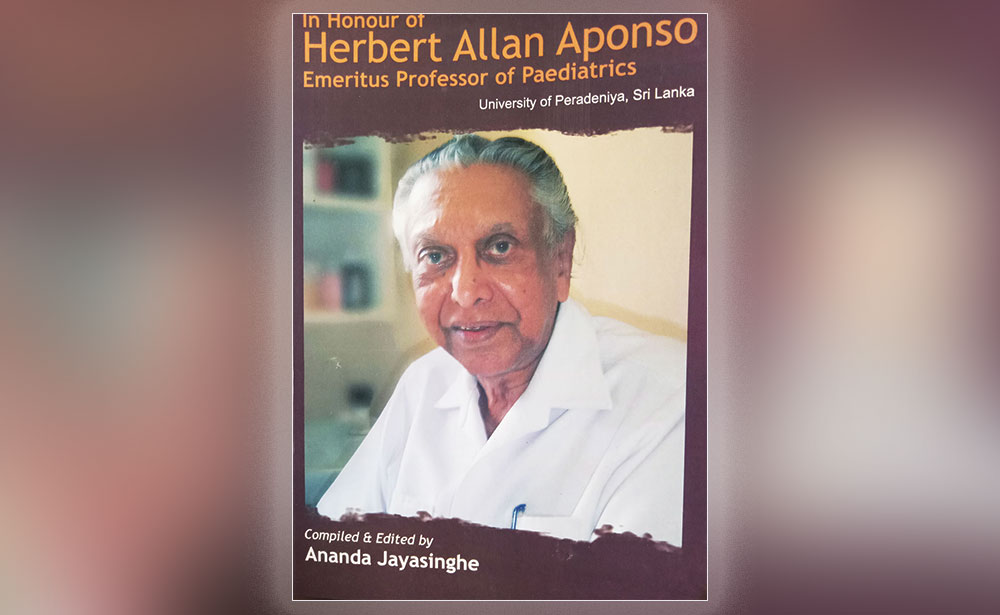
Herbert Allan Aponso, a true legend, the doyen of Paediatrics / Child Health, Professor Emeritus celebrated his 100th birthday on the 25th of March 2025, thus becoming a centenarian.
What a rare and glorious moment of anyone’s life!
I simply cannot recall any university academic achieving this exceptional milestone in Sri Lanka.
Born on the 25th of March 1925 in Lakshapathiya, Moratuwa, Professor Aponso has witnessed and thrived through a century of immense global change. It is fascinating to reflect on the world and Sri Lanka as they were in 1925. At that time, Sri Lanka (then Ceylon) was still a British colony, 23 years away from independence, with a population of just 4 million and an average life expectancy was below 40 years.
The world political map in 1925, was vastly different from that of today. One single large India without Pakistan and Bangladesh, one single Korea, no official Israel, and it was just three years after the fall of Ottoman Empire.
In the medical field, too, no United Nations, no WHO, no antibiotics, no blood banks, and no organised immunisation programmes. Diseases such as smallpox posed a dire threat to humanity, and devastating epidemics, such as the malaria outbreak in Ceylon in the early 1930s, resulted in negative population growth for the first time in history. Professor Aponso has survived through all these extreme challenging threats over the past one hundred years!
In 1964, he joined the Department of Paediatrics as a Senior Lecturer at Sri Lanka’s (then Ceylon) newly established second medical faculty, Peradeniya thus becoming a pioneer academic staff member of the Faculty of Medicine. He played a very vital role in teaching many a generation of doctors.
His brave decision to leave the position as Senior Lecturer at Faculty of Medicine, Colombo and relocate with his family to Peradeniya, is truly beyond belief as he left his birthplace and the more affluent Colombo life. At the time, the small town of Peradeniya was considered distinctly remote and less privileged.
He then became the quintessential ‘Peradeniya Man’, getting involved in the establishment of Kandy Society of Medicine (KSM), Peradeniya Medical school Alumni Association (PeMSAA) and in consolidating both the Department of Paediatrics and the Faculty of Medicine.
He retired from university service in 1993 after three decades of dedicated and remarkable service to the Faculty of Medicine and to the medical fraternity at large.
All staff members of Faculty of Medicine, Peradeniya and elsewhere who graduated before 1993 have invariably had exposure to his teaching, including myself and my wife Chandrika.
I also had the privilege of serving as Registrar in Paediatrics between 1985 and 1987 under his wing.
He is also blessed with three very caring children – Ajith, (Dr) Heshan and (Dr) Charmalie and many grandchildren and great grandchildren, all of whom care for him and look after him very well.
Professor Aponso is truly amazing and is perhaps the most complete man we can ever imagine, as he is a combination of numerous rare features moulded into one person. He has an attractive and gentle yet commanding personality, authority of a different kind, intelligence, kindness, passion, calm mind, commitment, high social standing and blessed with happy and exceptionally high-quality long life along with his gracious late wife (sadly passed away in 2017) Mrs Vimala Aponso and three caring children,
A devout Christian, Professor Aponso’s faith has been a guiding force throughout his life. At the same time, he has always recognised and respected the values of other faiths, particularly Buddhism. He often quoted the Buddhist scripture:
“Pûjâ ca pûjanîyânam” (Honour those who are worthy of honour) – Khp 5, Maṅgala Sutta.
This is well and truly appropriate and relevant to him.
He is a true legend of our time and above all a great human being.
I wish him a HAPPY 100TH BIRTHDAY!
Ananda Jayasinghe
(Retired Professor in Community Medicine, Faculty of Medicine, University of Peradeniya)
-
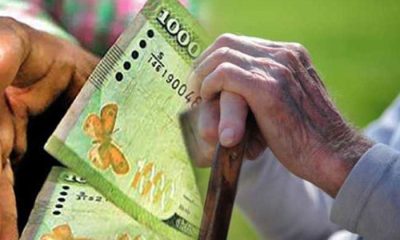
 News6 days ago
News6 days agoSeniors welcome three percent increase in deposit rates
-
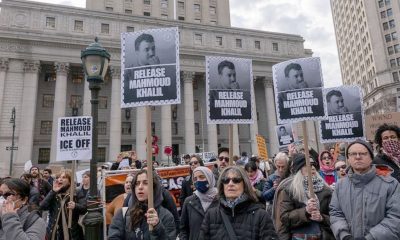
 Features6 days ago
Features6 days agoThe US, Israel, Palestine, and Mahmoud Khalil
-
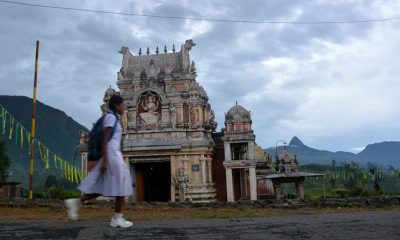
 News6 days ago
News6 days agoScholarships for children of estate workers now open
-
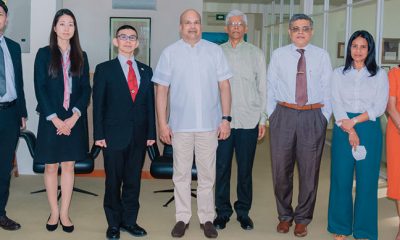
 News7 days ago
News7 days agoDefence Ministry of Japan Delegation visits Pathfinder Foundation
-
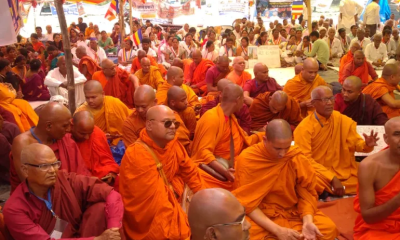
 Foreign News4 days ago
Foreign News4 days agoBuddhism’s holiest site erupts in protests over Hindu ‘control’ of shrine
-
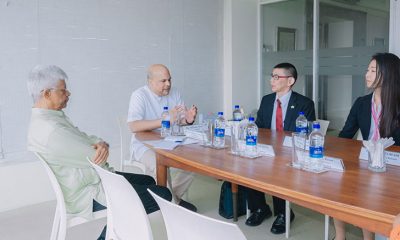
 News6 days ago
News6 days agoJapanese Defence Delegation visits Pathfinder
-

 Editorial7 days ago
Editorial7 days agoWhen promises boomerang
-
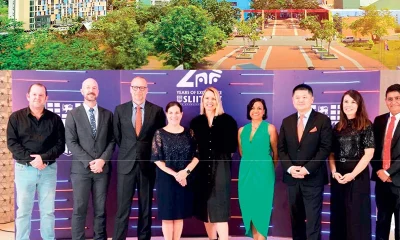
 Features3 days ago
Features3 days agoCelebrating 25 Years of Excellence: The Silver Jubilee of SLIIT – PART I











